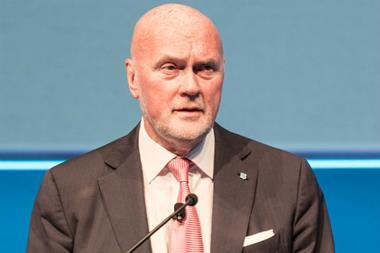Trial marriages for companies thinking about walking down the aisle?
Companies acquiring other businesses need to pay attention to the issues raised by the people already in place. "Too often the human resources management aspects are forgotten when firms engage in M&A activity," says Sue Cartwright.
She and Cary Cooper are co-authors of HR Know How in Mergers and Acquisitions, published by the Institute of Personnel and Development.
"In many ways the process of merger is much like marriage," Cooper says. "Whether two organisation cultures are compatible or not is a question often asked by boards and chief executives intent on finalising a deal."
Both Cooper and Cartwright believe that the decision-making process is fundamentally flawed, since it is based on projected earnings potential and strategic fit alone. "Vital human issues are regarded as matters for operations managers to sort out after the deal has been done," Cartwright says.
The orthodox view of the process starts with a board level decision to merge, followed by screening or identification of potential targets. Once a decision has been taken, the normal due diligence, bidding and negotiation procedures follow the required rules.
By the time an acquisition decision has been taken, so much senior management time has been absorbed that there is a reluctance to walk away from a deal, even in the face of likely major problems if it proceeds.
"It would be better for firms considering merging to co-operate closely on joint ventures beforehand like Fujitsu did with ICL," Cooper says.
"The more you know about the people side of both organisations, the better the outcome will be," Cartwright adds. "It is crucial that people management professionals play a key role in counselling, advising and planning. Such professionals have a major role in assessing the suitability of the match and bringing the new management teams together to clarify their intentions once the merger or acquisition is done."
{{PEOPLE MOVES }}
Close menu
- Home
- Retail & Wholesale
-
Products & Suppliers
- Back to parent navigation item
- Products & Suppliers
-
Product Categories:
- Back to parent navigation item
- Product Categories:
- Alcoholic drinks
- Bakery
- Cereals & breakfast
- Cheese
- Chicken & poultry
- Chocolate
- Confectionery
- Crisps, nuts & snacks
- Dairy
- Fish
- Fresh produce
- Frozen
- Household
- Meat
- Own Label
- Sauces & condiments
- Seasonal
- Soft drinks
- Vaping
- Vegan & plant-based
- World foods
- Suppliers
- People
- Reports & Data
-
Topics A-Z
- Back to parent navigation item
- Topics A-Z
-
Popular topics:
- Back to parent navigation item
- Popular topics:
- Cost of living crisis
- Crime
- Deposit Return Schemes
- Finance
- Government & Regulation
- Health
- Inflation
- Loyalty
- Marketing
- Mergers & Acquisitions
- New Product Development
- Sourcing
- Supply chain
- Sustainability & environment
- Technology
- Ultra Processed Foods
- Vaping
- A-Z all topics
- Content by type:
- Events
- Subscribe now
Sign in to comment on this article
Not logged in before? Register for FREE guest access today.
You will be able to:
- Read more stories
- Receive daily newsletters
- Comment on stories
Advert














No comments yet